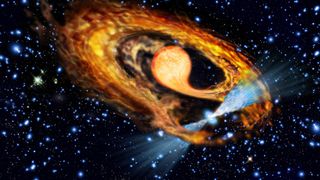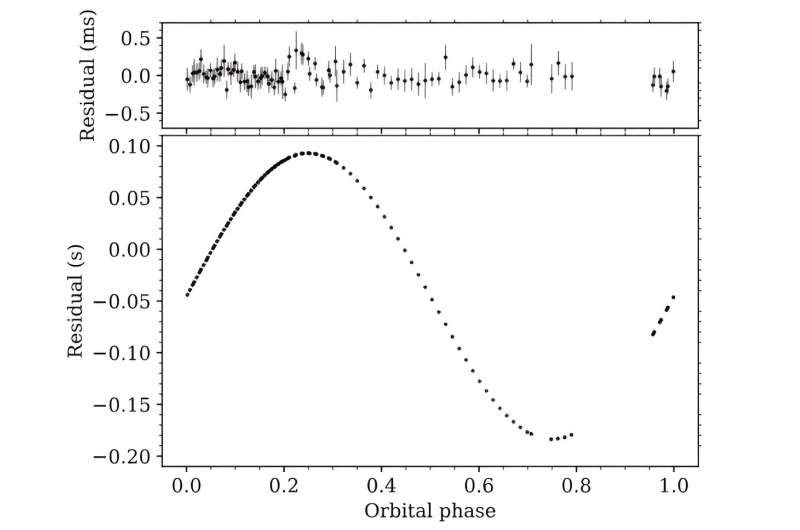Deep within the swirling heart of our Milky Way galaxy, astronomers have discovered a captivating resident: a rapidly spinning neutron star called a millisecond pulsar. This exciting find, made using Australia’s Parkes radio telescope, marks a significant leap in our understanding of the galactic center, raising new questions and igniting the prospect of further discoveries.

Celestial Lighthouses: Unveiling the Secrets of Pulsars
Imagine a cosmic lighthouse, a super-dense neutron star spinning at incredible speeds. With each rotation, it sweeps a beam of radiation across space, generating a precise pulse that can be detected by astronomers. These enigmatic objects are known as pulsars, and some of the most fascinating are millisecond pulsars (MSPs). These celestial speed demons complete a spin cycle in under 30 milliseconds, a testament to their incredible energy. Scientists theorize that these pulsars are born in binary star systems. Here, they act like cosmic tops, fueled by stolen material from their companion star, which spins them up to their phenomenal velocities.
Hunting for a Hidden Pulsar: The Snake Filament Reveals its Secrets
A team of astronomers led by Marcus E. Lower of the Australia Telescope National Facility (ATNF) set their sights on a captivating target – a radio filament in the galactic center nicknamed the “Snake.” This intriguing structure, shrouded in mystery, became the focus of their meticulous observations using the Murriyang Ultra-Wideband Low (UWL) receiver system. Their persistence paid off in a spectacular way!
A Speedy Surprise: Introducing PSR J1744-2946 and a Binary Dance
The team wasn’t just looking for any radio signal; they were on the hunt for a pulsar’s telltale pulse. Their observations unveiled a new resident within the Snake – a millisecond pulsar with a spin period of a mere 8.39 milliseconds. This newfound celestial dynamo has been christened PSR J1744-2946. Further analysis suggests PSR J1744-2946 isn’t a solitary resident. It appears to be part of a binary system, locked in a cosmic dance with a companion object at least five times the mass of our Sun. This binary dance offers another intriguing puzzle piece – could the gravitational interaction between the pulsar and its companion play a role in powering PSR J1744-2946’s phenomenal spin rate?
Decoding the Pulsar’s Secrets: A Potential Illuminator of the Snake
PSR J1744-2946’s story takes another interesting turn when we examine its location and radio properties. These align with a known radio source within the Snake filament. This suggests a possible connection – could PSR J1746-2946 be the power source illuminating the Snake? If this connection is confirmed, it would shed new light on the mechanisms that light up these celestial filaments, adding another chapter to our understanding of the galactic center’s energetic processes.
A Hopeful Glimpse: Unveiling the Galactic Center’s Secrets, One Pulsar at a Time
The discovery of PSR J1744-2946 is a thrilling development on multiple fronts. It not only unveils the first millisecond pulsar lurking in the galactic center but also reignites hope for many more hidden residents. The researchers believe that future high-frequency surveys could uncover a whole population of these speedy pulsars. This discovery could be a key piece in solving another galactic mystery – the origin of the mysterious high-energy gamma-ray glow emanating from the Milky Way’s core. Some scientists believe that a population of undetected MSPs could be the source of this enigmatic glow.

This pulsar discovery is a testament to the power of curiosity and cutting-edge technology. It’s a reminder that even in the familiar surroundings of our own galaxy, there are still secrets waiting to be unveiled. As we delve deeper into the swirling heart of the Milky Way, studying pulsars like PSR J1744-2946, one at a time, will undoubtedly lead to further groundbreaking discoveries, helping us unravel the mysteries that lie at the very center of our galaxy.



















